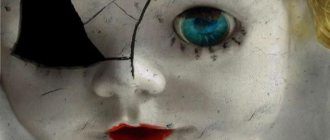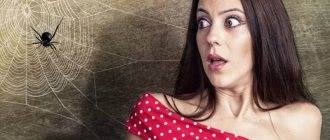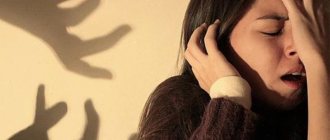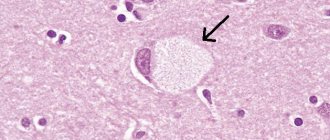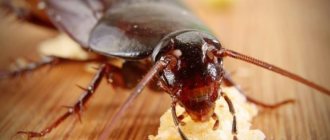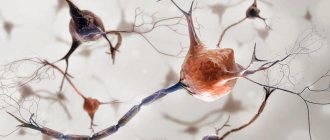- October 6, 2018
- Manias and Phobias
- Natalie Lynn
Insectophobia, also known as entomophobia, literally translates as fear of insects. This phobia is one of the subtypes of zoophobia and, in turn, is divided into several subtypes, for example, apiophobia - fear of bees, arachnophobia - fear of spiders, myrmecophobia - fear of ants, acarophobia - fear of ticks. Therefore, if you want to know what the fear of insects is called, you should clarify which species you are interested in.
The review will talk about insectophobia. It refers to an irrational fear of some or all types of insects. Fear mainly arises in humans due to aversion towards various insects due to their shape, color and also because they spread many diseases.
A phobia that originates in a person makes his life very uncomfortable. An insectophobe may not even leave the house, for fear of noticing any insect outside of it. Fear also gives rise to “delusional parasitosis,” when the patient begins to experience sensations such as tingling, itching, crawling on his skin, and react accordingly to them - try to remove a non-existent insect from his body, wash it off or scratch the skin until it bleeds, which, in in turn, can lead to infection. A person suffering from insectophobia may also develop OCD, or obsessive-compulsive disorder. It creates a desire to constantly clean the living space and complicates a person’s mental and physical condition.
Causes of insectophobia
Why are people afraid of insects? There are many reasons that can cause insectophobia, or fear of insects, in a person. The reasons can be divided into two main categories.
Objective factors:
- Lived experience. It often happens that a person develops a disease of fear of insects after being bitten by a bee, mosquito, etc. A similar experience experienced in childhood can lead to psychological trauma, which develops into insectophobia.
- Imitation of others. If there is a person in the family who suffers from insectophobia, the child can learn from him not only to be wary of insects, but also to reinforce the fear, degenerating it into a full-fledged phobia.
- Medical problems. If you have been through a traumatic experience in your personal life due to loss of someone or divorce, the level of stress can create fear in you. Poor mental health, mental retardation and anxiety problems, or poor physical condition due to hyperthyroidism, folate and thiamine deficiency can also contribute to the onset of a phobia. Diseases such as syphilis, meningitis, cirrhosis can give rise to a phobia in you. Schizophrenia is another significant reason for the development of a phobia.
Environment. A person may feel like something is crawling on their body, but this sensation may be due to skin irritation caused by static electricity, pollen deposits and allergens on the pores of the skin or products containing, for example, formaldehyde.
Contrived factors:
- Thoughts of harm. Many patients constantly think about how certain insects can harm them: whether their bites are poisonous, whether they carry infections, and the like. Such thoughts, which may initially be quite rational, gradually become obsessive and contribute to the formation of insectophobia.
- Fantasy. If the previous point was based on objective information and the macrocosm, then in this case the whole problem lies in the patient’s wild imagination. Without any special knowledge about insects, a person imagines them as terrible monsters capable of causing him great harm.
- Literature, cinema, computer games, etc. Images depicting terrible insects, which often do not correspond to reality, an artistically exaggerated description of harm contribute to the formation of insectophobia,
Where does the disease come from? What are the reasons?
Fear of insects can be triggered by a variety of reasons; scientists do not give a definite answer to this question. One of the most banal reasons can be a real negative experience, most often this happens in childhood. The child was bitten by an insect, he was in pain, or, worse, had an allergic reaction, and was taken to the hospital.
All these negative consequences are attached to the image of a bee, mosquito or other insect. Sometimes consolidation occurs not because of personally experienced pain, but because of a parental warning: “Be careful! It will bite! Will be bad!".
If such reasons can be called relatively rational, then most phobias are usually formed irrationally, on an unconscious level. Two main theories are associated with two schools of psychology.
Behavioral theory implies classical conditioning. The situations described above also fit this theory. But besides the development of such obvious conditioned reflexes, when fear of an insect is provoked directly by the insect, there are couplings with completely neutral events. That is, stimuli occurring simultaneously are reinforced, and subsequently have the same reaction. The famous experiment with little Albert, conducted by John Watson at the beginning of the century, is proof of this. If we give an example of the emergence of insectophobia, it could be the following situation. The child is lost on the playground, he does not see his mother and begins to panic. At the same time, he clearly hears the buzzing of a fly flying near him. A connection occurs and the reaction of fear from the loss of the mother is associated with the sound made by the insect.
The second main theory of the origin of phobias comes from the work of Sigmund Freud. Psychodynamic theory considers the causes of fear to be the psychological defense mechanism – repression and transference. Internal suppressed anxiety finds its outlet in a neutral object that the patient can already control. We will not cite here the case of the boy Hans, well known in psychoanalytic circles, described by Freud in his “Psychology of the Unconscious”.
But if we explain in simple words the mechanism of the occurrence of insectophobia according to psychodynamic theory, then things are like this: the patient has some kind of unconscious problem (fear of death, bad relationships, dissatisfaction with work, parents, children, etc.), his level of anxiety in connection with this increases , this makes him feel bad. But since the true reason is still not realized by him, and he needs to calm himself down somehow, because it is impossible to live constantly with an increased level of anxiety, a phobia arises.
“If a bee doesn’t bite me, I’ll feel good and calm.” That's it, a person has found a way to reduce his level of anxiety using methods available to him - avoiding bees.
Signs and symptoms
Symptoms that may indicate entomophobia or insectophobia:
- Constant complaints of insect bites are the main symptom of insectophobia, that is, a phobia such as fear of insects.
- Reclusion.
- Reading about insects to see if fear is rational.
- Obesity.
- Frequent visits to doctors due to skin problems.
- When thinking about insects, physical tension appears, expressed in symptoms such as shortness of breath, nausea, and vomiting.
- A panic attack at the sight of an insect is also a sign of insectophobia.
- Isolation from society.
The symptoms are so common that a person often does not realize that they are developing a phobia - the fear of insects. The main symptoms of any phobia are:
- Panic when confronted with the cause of fear or even at the thought of the source of fear.
- The desire not to leave the house in order to avoid confrontation with the source of fear.
- A feeling of powerlessness due to the fact that a person cannot control fear, even knowing that it is irrational.
- The children start crying.
- Development of physical symptoms such as inability to breathe, sweating, and vomiting.
Types of fear of insects
Everyone has their own “creepiest creature” with which unpleasant memories are associated
Insectophobia is a serious mental disorder caused by the fear of insects. Its symptoms are especially pronounced when a person meets the object of his fear.
The disease may be advanced, causing panic attacks to occur in a person even at the mere mention of insects in a conversation
.
There are several types of insectophobia, each of which has its own distinctive features:
- Apiphobia (fear of bees).
- Acarophobia (fear of ticks).
- Dipterophobia (fear of flies).
- Arachnophobia (fear of spiders).
- Isopterophobia (fear of termites).
- Scoleciphobia (fear of worms and larvae).
- Myrmecophobia (fear of ants).
Real fear should not be confused with ordinary hostility towards insects. The second option cannot be considered a disease. This is simply one of the types of human behavior when seeing these creatures.
Tests for diagnosing insectophobia
Currently, there are no proper tests to identify a specific phobia, so doctors turn to the Diagnostic and Statistical Manual of Mental Disorders, published by the American Psychiatric Association, to test various criteria for identifying insectophobia. The guideline also suggests the type of treatment that can be administered to the patient. During therapy sessions, you will be asked various questions, and your response to them will serve to determine the phobia. Your medical and psychological history and heredity will also help doctors in the identification process.
The main criteria that help diagnose insectophobia are:
- A feeling of intense fear and irritation when the patient notices an insect or even sees a picture of it.
- Fear even at the thought of insects.
- Avoiding encounters with any insects or even viewing images of insects.
- Avoidance of all types of social activities that occur outside the home so that the patient can avoid encounters with insects. When an insect approaches a person, he noticeably tenses up.
- Symptoms of the phobia continue for more than 6 months.
It is worth noting that fear of insects is inherent in most people, but in order to determine which fear of insects is a phobia in its pure form, it is still worth contacting a specialist. He is the one who will help you understand and establish an accurate diagnosis.
Insectophobia – panic fear of insects
Insectophobia is a mental disorder characterized by an intense fear of insects. Another name for it is entomophobia. As a rule, a person suffering from this disorder is frightened not by all creatures in a row, but by certain types of them, for example, bees, wasps, cockroaches, flies, ants, fleas, spiders, bedbugs. Some patients have a fear of all insects.
Manifestations of a phobia can range from hostility and disgust to panic horror at just the sight of a flying or crawling insect.
Independent actions
If the case is not advanced and your phobia is at the initial stage of development, it is important to understand what exactly is bothering you - what insects and possible causes of fear. By answering these questions yourself, you can choose how to deal with your fear of insects.
- If you are afraid of the unknown or there is no information about this or that representative of the macrocosm, you should read an encyclopedia about insects, study pictures, detailed descriptions. You can also watch documentaries, just make sure (ask someone to watch the film in advance) that it does not contain scenes that frighten you, for example, contact of insects with people, insect attacks on humans, etc. This method is suitable for both children, as well as for adults.
- If the cause of your fear is a feature film, you should watch it again, not forgetting that everything that happens on the screen is fiction. When using this method with children to help them get rid of their fear of insects, think carefully about the approach, otherwise the situation may only get worse.
- If insects are simply unpleasant to you, for no apparent reason, consider buying photo wallpaper depicting representatives of the macrocosm. Souvenirs and accessories will also help - having gotten used to seeing only decorations in an insect, a person will gradually forget about fear.
Self-medication
Not everyone has the opportunity to visit a psychotherapist. Self-medication is better than inaction. If you have psychological and physical signs of a phobia, try these self-treatment methods. It’s worth mentioning right away that you can’t prescribe any sedatives yourself. For advice on taking medications, consult a therapist or neurologist. The doctor will recommend medications that are suitable for a particular case.
Recommendations for adults
First of all, do some self-analysis. Write down everything that scares you. What to do next?
- Analyze each episode as if you were a psychologist. Explain that the fear was not real, it was fantasy, panic.
- Ask your parents if you were bitten by insects as a child. Often the causes of phobias are rooted in childhood.
- Read about the insects you are afraid of. See pictures. Not terrible ones, but ones where they behave peacefully in nature.
- Do your research: You must understand the real danger.
- Consider whether others feel the same way when they are near the object of fear.
- Learn to tolerate the presence of this insect nearby. Then try to touch it if it is not life-threatening. For example, if you are afraid of spiders, then you should come to a special pet store that sells them. The seller will tell you everything and let you hold the spider, which is not dangerous at the moment.
Many people, after getting rid of a phobia, keep insects at home
Recommendations for children
Children's fears are more difficult to overcome. It's better to talk to a psychologist. This can be done via a helpline, online or in person by making an appointment.
You can only read fairy tales with your child in which insects appear as heroes. There are wonderful cartoons about bees and ants.
You also need to talk with adult children about fears and try to find out the reason. Show that the fear is exaggerated. The usual precautions are sufficient.
Treatment of insectophobia
If the methods listed above did not help you cope with the problem, be sure to seek help from a professional.
Entomophobia, or insectophobia - as the fear of insects is called - is often mistakenly considered a mental illness. Because this phobia is not well documented in the list of similar disorders, doctors are often unable to identify it. The patient remains without proper treatment for a long time. Therefore, the diagnosis of phobia is very important and multidisciplinary approaches should be taken.
Some therapeutic treatments for insect phobia along with prescribed medications allow the patient to remain calm and in control. Often during psychotherapy, an entomologist is brought in for consultation to help the patient understand that his fear is irrational.
If the attack took you by surprise
Insectophobia often catches a person at the wrong time. You can see an insect on yourself or in close proximity everywhere: at work, at home, while walking, in nature. The first thing to do is to go to a safe distance. This is a simple precaution to avoid being bitten by a bee, tick or spider. If an insect is in the house, it must be expelled or destroyed. The bee can be driven out by opening the window. It's more difficult with a spider.
5 recommendations will help you cope with panic:
- If panic sets in, breathe deeply. Inhale for “one”, exhale for “two”.
- Call someone who can remove the insect from your home.
- Remember that there is no real danger.
- Remember that the cause of fear is your distorted attitude towards this species. The insect is not dangerous. They generally do not have the habit of attacking unnecessarily.
- Don't make a big deal about the episode. Immediately switch to other thoughts. We live in unity with nature, and spiders, bees and others are as much a part of it as humans.
Learn to control yourself, don't react too emotionally. Imagine the calmest, most balanced person from your environment. How would he react? Take his behavior pattern and copy it.
Desensitization, or exposure therapy, to treat insectophobia
Desensitization or exposure therapy to treat insectophobia helps overcome fear by exposing the patient to the object of fear. For example, the first images of insects are shown so that the patient can influence and reduce his level of anxiety. Slowly, as the patient begins to understand that not all insects are harmful, he is taken out into the garden where he may come into contact with flies or bedbugs.
Medicines for the treatment of insectophobia
Although medications cannot reduce insectophobia, they can help you control the physical symptoms that arise from the phobia.
- Antidepressants are called serotonin reuptake inhibitors, which control your mood by working as neurotransmitters in your brain. Antidepressants are prescribed according to your condition.
- Sedatives for insectophobia are those medications that are also known as benzodiazepines and help calm your nerves and make you less anxious. But at the same time, you should be careful while taking these pills as you may develop addiction and there may also be adverse effects if you take alcohol.
- Beta blocker medications block the stimulating sensations you experience due to entomophobia. The medicine also reduces heart rate caused by anxiety. A small amount may improve your condition for a while.
Risk factors
There are several factors that may put you at risk of developing a phobia:
- If you notice that anyone close to you, such as father, mother, brother, etc., suffers from insectophobia, you risk developing this fear in yourself as well.
- If you have experienced a traumatic incident in the past, you may develop fear of the source.
- Specific phobias develop even at the age of 10, so you become unable to interact with people.
Complications
A phobia that bothers someone and causes serious problems in their life may not seem like a concern to others. A patient suffering from insectophobia may have many complications, such as:
- Avoiding any social interaction because of the thought that people might laugh at him. This behavior can lead to reclusiveness and loneliness.
- The complication of insectophobia leads to clinical depression or develops anxiety disorders.
- Substance abuse to cope with stress caused by fear.
How to understand that a person has insectophobia?
- The heart rate increases and severe shortness of breath occurs.
- A panic attack occurs.
- Nausea and vomiting appear.
- The color of the skin changes, especially the face: it turns red or pale.
- Sweating increases.
- The pupils dilate.
In especially advanced cases, a person behaves more than strangely: he uses insecticides here and there, puts on protective clothing when going outside, forbids ventilation, is afraid to leave the house, and is afraid to travel to other countries because of local insects. Gradually, methods of protection turn into an obsession. A person tortures himself and others.
